A Short Biography of Bill Gates; The Founder of Microsoft
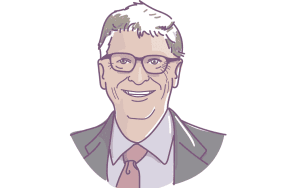
Who is Bill Gates?
Microsoft co-founder and business magnate Bill Gates is an American computer scientist, entrepreneur, and philanthropist.
Whose family name is William Henry Gates III, is an American computer programmer and entrepreneur. He co-founded Microsoft Corporation, the world’s largest personal computer software firm. His life road started on October 28, 1955, in Seattle, Washington.
The Beginnings
Gates and his two sisters, Kristianne and Libby, were from a comfortable middle-class background during their childhood. William H. Gates Sr., their father, was a bright but reticent law student when he met his future wife, Mary Maxwell.
She was a leader among her fellow students and a talented athlete at the University of Washington.
The Gates family was very close, and they instilled a healthy dose of healthy competition and a desire for greatness in each of their three children.
Even as a young boy, Gates’ competitive spirit was displayed when he organized sports competitions between his family members at their Puget Sound summer home. He also excelled in Monopoly and other board games, with Risk being his favorite.
Mary Gates, Gates’ mother, had a brief teaching career before focusing on raising her children, volunteering, and civic engagement.
She and her son had a close bond. She also participated on the United Way and International Business Machines (IBM) boards, as well as her grandfather’s Seattle-based First Interstate Bank. She often brought Gates along when she helped at a local school or non-profit.
As a kid, Gates devoured books and spent countless hours reading reference materials like encyclopedias. Gates’s parents started worrying about him when he was around 11 or 12. His parents were concerned that he may become an outcast since, despite his academic success, he often appeared bored and distant.
Gates’ parents, staunch public education advocates, sent him to the prestigious Lakeside School for Preparatory Studies in Seattle when he was 13. He flourished in maths, physics, drama, and English, among other disciplines.
At the tender age of 13, Gates created his first computer program. While still in high school, he collaborated with other budding computer scientists to automate the school’s payroll and launch Traf-O-Data.
This firm provided traffic monitoring equipment to municipalities. When Gates was a sophomore at Harvard, he teamed up with Paul G. Allen, a friend from back home, to create software for the university’s first microcomputers.
A Seattle IT firm offered free computer lab time to Lakeside School pupils. The school’s Mother’s Club bought a teletype terminal with money raised during a rummage sale.
Gates was so fascinated by the possibilities of the computer that he spent much of his leisure time at the terminal. He created a tic-tac-toe program in BASIC that could be used to compete against a computer.
In 1973, Gates completed his education at Lakeside. Over several years, he introduced himself to new people by mentioning that he got 1590 out of 1600 on the college SAT.
Private Matters


Melinda French, a product manager at Microsoft at the time, grabbed Gates’ eye when she was 23 years old in 1987. Gates was 32 at the time. Melinda, who is exceptionally intelligent and well-organized, was a great fit for Gates.
Over time, they developed a deeper friendship based on shared interests and experiences. Melinda and Bill Gates tied the knot in Hawaii on January 1, 1994.
They took some time off in 1995 to travel and gain perspective after the tragic loss of his mother’s death due to her breast cancer. Their first child, a daughter named Jennifer, arrived in 1996. They welcomed a son, Rory, in 1999 and a daughter, Phoebe, in 2002.
In May of 2021, they decided to end their marriage publicly.
Financial Security
At 31, Gates became an instant millionaire when he took Microsoft public in an initial public offering (IPO) in March 1986 for $21 per share. Gates owned $234 million (or 45 percent) of Microsoft’s $520 million market value because he owned 24.7 million shares (or 45 percent).
The corporation’s stock price went up, and the stock split several times over the years. Gates became a billionaire when the stock price reached $90.75 in 1987.
Since then, Gates has consistently ranked among the top 400 wealthiest Americans on Forbes’ yearly list. With the stock at an all-time high and having split eight times since its first public offering, Gates’ worth temporarily surpassed $101 billion in 1999.
Home
The Gates family has lived in their 55,000-square-foot Lake Washington mansion since 1997. The house is a commercial hub and a warm and welcoming home for a family of five.
Adverse Effects of Air Pollution on Young and Infants
Bill Gates; Career and Microsoft
Failure at Harvard


In the autumn of 1973, Gates enrolled at Harvard University to pursue a career in law. Gates walked out of Harvard in 1975 to focus on Microsoft, much to the dismay of his parents.
Gates spent his free time in the computer lab rather than the classroom. He barely had a routine; he slept a few hours the night before a test, memorized everything he could, and got by with a decent grade.
Collaboration and Discussion Alongside Paul Allen
Gates and Allen first met when they were both students at Lakeside School. Although they were very different personalities, the couple became quick friends via their shared interest in technology. Allen was quieter and more reticent. Gates might be aggressive and feisty.
Despite their differences, Allen and Gates spent much of their free time together writing code. The two occasionally argued over who was right or should be in charge of the computer lab. When tensions finally reached a boiling point, Allen barred Gates from the lab.
After taking advantage of a software flaw to get free computer time from the company that provided the computers, Gates and Allen had their access to the school computers terminated.
After they completed their probation and offered to debug the program, they were allowed to return to the computer lab. Gates created a payroll program for the corporation whose computers the boys had broken into and a scheduling program for the school during this period.
At 15, Gates and Allen went into business together to create a computer program to track traffic in Seattle. This program was called “Traf-o-Data,” and was released in 1970. They were successful to the tune of $20,000! While Gates and Allen were eager to launch their own business, Gates’ family was adamant that he finish high school and go on to college to study law.
Allen attended Washington State University, while Gates attended Harvard. Despite this, the two remained close. Allen spent only two years in higher education before leaving for a job with Honeywell in Boston, Massachusetts.
A copy of Popular Electronics carrying an article about the Altair 8800 mini-computer kit was presented to Gates at about this time. Both young guys were excited by the prospect of what new innovations in personal computing could be made possible by this machine.
Micro Instrumentation and Telemetry Systems (MITS), based in Albuquerque, New Mexico, created the Altair. When Gates and Allen contacted the business, they said they were developing BASIC software compatible with the Altair.
Although they needed both an Altair and the necessary programming, they were curious as to whether or not MITS would be willing to fund the creation of such a program.
Ed Roberts, president of MITS, had the boys demonstrate their invention to him. Gates and Allen hurriedly spent the next two months at Harvard’s computer lab writing the BASIC program.
Having never attempted it on an Altair computer before, Allen traveled to Albuquerque to do a test at MITS. That was a total success. After Gates left Harvard to join Allen at MITS, he was hired there. To create Microsoft, they joined forces.
After his diagnosis of Hodgkin’s illness in 1983, Allen stayed at Microsoft until his death. After a year of intensive therapy, Allen’s cancer went into remission, yet he still decided to leave the company.
Speculations abound as to Allen’s departure from Microsoft. Some claim Gates forced him out, while others say it was a formative experience for Allen, who realized there were better uses for his time.
The Ability to Make Money…4 Lessons by My Honorable Guest
Way to Success
With Microsoft doing so well, Gates became the company’s largest shareholder and collected an enormous paper fortune. In 1986, he became a paper billionaire. By the end of the following decade, his wealth had ballooned into the tens of billions of dollars, making him, according to some estimates, the richest private individual in the world.
Gates initially avoided public scrutiny by delegating his philanthropy and community service work to one of his charities because he needed more interests passions apart from programming and the potential of IT.
Gates reluctantly became a more public presence as Microsoft’s strength and reputation expanded, especially as it attracted the attention of the U.S. Justice Department’s antitrust division.
His competitors (especially those in Silicon Valley) painted him as ambitious, dishonest, and focused on making money off of every electronic transaction in the world.
His fans, however, praised him for his remarkable business sense, adaptability, and insatiable hunger for discovering novel methods to enhance the usefulness of computers and gadgets through software.
Creation of Microsoft
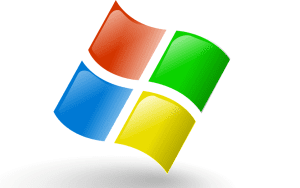

Micro-Soft was founded by Gates and Allen in 1975, with the hyphen between “microcomputer” and “software” being eliminated the following year. The company’s initial offering was Basic for the Altair computer.
Things didn’t go swimmingly at first. Revenue from licensing and royalties for Microsoft’s BASIC program for the Altair computer needed to be increased to cover the company’s operating costs. Gates later claimed that only around 10% of Altair users using BASIC had paid for the software.
Computer enthusiasts copied and distributed pre-release versions of Microsoft’s BASIC software for free. Many early adopters of personal computers were not motivated by financial gain.
They appreciated being able to easily copy and distribute software to their colleagues and fellow PC users. Their ideas of Gates were distinct. He thought it was dishonest to give away something that was originally intended to be sold for free.
Gates warned computer enthusiasts in an open letter he published in February 1976 that illegal copying, sharing, and use of software would “prevent good software from being written.”
In a nutshell, software piracy would reduce the incentive for developers to put up the effort required to create useful programs. Although Gates’ opinions were not shared by the computer community, he remained firm. He used the threat of innovation to defend against accusations of unfair business practices.
There were frequent yelling bouts between Gates and MITS president Ed Roberts. Gates, known to be confrontational, argued with Roberts about software development and the company’s future. According to Roberts, Gates was a brat and a nuisance.
In 1977, Roberts sold MITS to a rival computer firm and returned to his home state of Georgia to begin medical school.
Gates and Allen were operating independently. The two had to file a lawsuit against MITS’s new owner to protect their ownership of the proprietary Altair software. Beginning in 1979, Gates relocated Microsoft headquarters from Seattle to Bellevue, Washington, where the business would write software in various formats for use by other computer manufacturers.
Once back in the Pacific Northwest, Gates immediately got to work. The company’s 25 workers were all given extensive roles in running the business, creating new products, expanding the company, and promoting the brand.
Despite rocky beginnings, Microsoft had generated about $2.5 million in revenue by 1979. Gates made himself CEO of Microsoft when he was just 23 years old.
He served as leader and spokesperson for the company, thanks to his software development and business expertise. Gates personally inspected every line of code the company released, frequently rewriting it from scratch.
Software by Microsoft Designed for IBM PCs
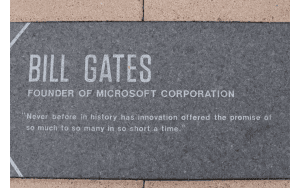

Gates was constantly on the road promoting Microsoft software. At the same time, the computer industry expanded, and companies like Apple, Intel, and IBM developed new hardware and components.
His mother was a frequent travel companion. Mary was well-connected and well-respected since she served on the boards of several major corporations, including IBM. Mary served as the intermediary between Gates and IBM’s CEO.
When IBM needed software to run its forthcoming PC, it contacted Microsoft in November 1980. Someone at IBM apparently confused Gates for office help and asked him to serve coffee during their first encounter.
Gates may have deceived IBM with his youthful appearance, but he won them over swiftly and successfully. The only catch was that Microsoft still needed to finish building the core operating system to power IBM’s new PCs.
Not to be deterred, Gates purchased an OS for IBM-compatible PC clones. He struck an arrangement with the program’s creator that made Microsoft the exclusive licensing agency and, eventually, the sole proprietor of the program without informing Microsoft of the IBM agreement.
The business filed a lawsuit against Microsoft and Gates for allegedly concealing crucial information. Microsoft paid an unknown sum to end the case without going to court, but neither Bill Gates nor the company admitted fault.
For Gates’s recently acquired software to run on his IBM PC, he had to make some changes. He did so for a charge of $50,000, which was the same as what he had paid for the software. IBM wanted to purchase the source code, which would have provided access to the OS’s inner workings.
Instead, Gates suggested that IBM pay a licensing charge for each copy of Gates’ software included in IBM PCs.
This set the stage for Microsoft to license their MS-DOS operating system to rival PC makers when they inevitably began producing IBM PC clones. Microsoft also developed software called Softcard, which enabled Apple II computers to run Microsoft BASIC.
Microsoft experienced a period of explosive expansion between 1979 and 1981 as a direct result of the company’s work on software for IBM. Revenue jumped from $2.5 million to $16 million as the number of employees doubled to 128.
Microsoft was founded by Gates and Allen in the middle of 1981. Gates was quickly promoted to president and then chairman of the board. Allen now holds the position of executive vice president.
In 1983, Microsoft opened offices in London and Tokyo to expand internationally. About a third of all computers used then were powered by its programs.
An Enviable Reputation
Gates, despite Microsoft’s prosperity, felt unsafe. Gates’s intense motivation and competitive nature came from his habit of constantly scanning the horizon for threats. According to Gates’s aide, an early riser was spotted sleeping under a desk.
Once she realized it was Gates, she decided against alerting security or the police.
Given his brilliance, Gates understood the software industry from every angle, from product development to corporate strategy. He would create a profile of all the probable instances when analyzing a corporate move and then run through them, asking questions about everything that could go wrong.
He assumed the same level of commitment from all employees. His infamously combative managerial style helped fuel innovation by forcing people to rethink their approaches. It’s possible that Gates would say, “That’s the stupidest thing I’ve ever heard!” to a presenter who wasn’t ready for it.
This was a test of the employee’s dedication as much as Gates’ commitment to Microsoft. He was continually assessing the level of conviction held by others around him.
Microsoft Network
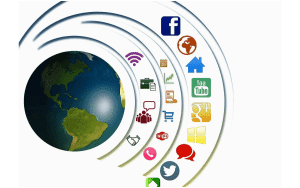

Gates displayed all of these characteristics in his quick reaction to the unexpected public interest in the Internet. To compete with America Online and other Internet service providers.
Gates launched the Microsoft Network in 1995 and 1996, developed the Windows CE operating system platform for networking non-computer devices like home televisions and personal digital assistants, and acquired the massive Bettmann photo archives and other content through his company Corbis.
Antitrust Lawsuits and Microsoft Office
Gates’ reputation as a formidable competitor outside of Microsoft was growing. OS/2 was developed as an alternative to Microsoft’s DOS by a consortium of tech firms led by IBM. Gates resisted the temptation to abandon Windows development, making the operating system more accessible and expanding its scope of usage.
Microsoft Office, a suite of office productivity programs including Word and Excel, was first released in 1989 and was designed to work with other Microsoft software.
There was a lack of OS/2 app compatibility. OS/2 was quickly eclipsed by Microsoft’s revolutionary Windows, which sold 100,000 units in its first two weeks. Because of this, Microsoft became virtually unrivaled in the PC operating system market.
The FTC quickly opened an investigation into Microsoft for potentially deceptive advertising.
Microsoft was the subject of multiple probes by the FTC and DOJ throughout the ’90s. There have been claims that computer makers that used the Windows operating system on their machines paid Microsoft less than they should have.
Microsoft was also accused of blackmailing PC makers into including Internet Explorer when they licensed Windows from Microsoft.
Microsoft’s operating systems and software development teams were at risk of being split apart at one point. Microsoft responded by saying that such regulations would stifle creativity and referencing Bill Gates’ history of fighting software theft. Microsoft avoided a separation by reaching a settlement with the US authorities.
Gates laughed off the criticism by appearing as Mr. Spock from Star Trek in advertising and making cameos at computer trade fairs. Through the 1990s, Gates led the corporation and withstood federal inquiries.
I’m Quitting Microsoft.
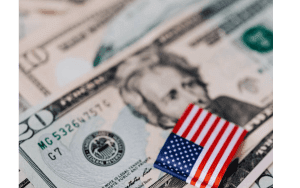

Gates handed over CEO duties at Microsoft to his college buddy and longtime Microsoft employee Steve Ballmer in 2000. Ballmer had been with the company since 1980. While he still served as chairman of the board, Gates moved into the role of chief software architect to devote more time to the aspects of the business that truly excited him.
Gates announced his departure from Microsoft to focus on the Gates Foundation full-time in 2006. On June 27, 2008, he worked his last full day at Microsoft.
Gates resigned as Microsoft chairman in February 2014 to take on the role of technology adviser. Microsoft’s new CEO is 46-year-old Satya Nadella, who succeeded Steve Ballmer.
You Should Aim For Success Rather Than Wealth.
Melinda and Bill Gates
Gates was well-known for his philanthropy in addition to his job at Microsoft. Bill Gates and his ex-wife Melinda founded the William H. Gates Foundation in 1994 (later renamed the Bill & Melinda Gates Foundation) to support initiatives in international health and the Pacific Northwest.
Bill and Melinda make the Gates Library Foundation in 1999 (later renamed the Gates Learning Foundation) to raise money for North American libraries and the Gates Millennium Scholars programme to provide financial aid to students from underrepresented groups who want to further their education.
Bill & Melinda Gates Foundation; Health and Other Social Works


Melinda and William Gates’ charitable organization
This Foundation was founded in 1994 by Bill and Melinda Gates to promote global health, education, and economic opportunity for impoverished people. Domestic challenges, like preparing U.S. high school students for college, are another focus for the group.
Under Melinda’s sway, Bill had begun to consider a career in public service, looking into the philanthropic endeavors of American industrial titans like Andrew Carnegie and John D. Rockefeller. He concluded that much of his fortune should be donated to good causes.
In 2000, Bill and Melinda Gates combined several family charities into one large one, the Bill & Melinda Gates Foundation, funded by a $28 billion bequest from the couple. Bill spent the better part of the following four years working tirelessly for the Bill & Melinda Gates Foundation.
Since leaving Microsoft,
Gates has focused much of his attention on the charitable initiatives of the Bill & Melinda Gates Foundation. Gates advocated for charter schools and national Common Core elementary through high school standards in 2015.
Around the same time, the Gates Foundation announced that it would provide its staff with a year of paid leave following the birth or adoption of a child, further establishing Gates as an innovative employer.
The organization began publishing its annual “Goalkeepers” report in 2017, which looks at developments in crucial public health sectors like child mortality, malnutrition, and HIV. According to Gates, the next decade’s two most pressing public health issues are infectious disease and chronic illness.
In April 2018, Gates and Larry Page, co-founders of Google,
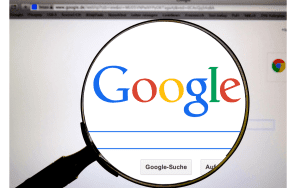

Announced that they would each contribute $12 million towards developing a universal flu vaccine. According to him, “bold and innovative” projects that want to launch clinical trials by 2021 will each receive a grant of up to $2 million.
Some have questioned whether $12 million will spur any significant medical discovery. In contrast, others have commended the objectives behind the investment, and Gates has hinted that there may be more to come.
In Jun e of 2006,
Warren Buffett pledged a perpetual donation to the foundation to grow its assets to almost $60 billion over the following 20 years. Even when the new millennium began, the foundation’s priorities remained the same: promoting health and development worldwide and local communities and schools in the United States.
Although he remained chairman of the board, Gates handed up the day-to-day operations of Microsoft in June 2008 so that he could focus on the Bill & Melinda Gates Foundation. He stood down as chairman in February 2014 but will remain on the board until 2020. He received the Presidential Medal of Freedom at this time (2016).
In 2019, the docuseries Inside Bill’s Brain: Decoding Bill Gates premiered. The divorce between Gates and his wife took two years to finalise.
Studying Alzheimer’s
A $50 million personal contribution from Gates to the Dementia Discovery Fund was announced in November 2017. He planned to invest an additional $50 million towards Alzheimer’s disease research startups.
According to reports, Gates views the issue as deeply personal after witnessing the disease’s terrible impact on members of his own family.
He told CNN that “any type of treatment would be a huge advance from where we are today,” and “the long-term goal has got to be the cure.”
Construction of an Arizona “Smart City”
One of Gates’ companies put $80 million into creating a “smart city” close to Phoenix, Arizona, and this was reported in 2017. The Belmont Partners real estate investment firm claims their proposed city will
It has been reported that 3,800 of the almost 25,000 total acres earmarked for the site will be used for office, commercial, and retail use. There will be a capacity for 80,000 dwellings once public schools take up another 470 acres.
Coronavirus


In 2020, Gates’s dire predictions about the world’s unpreparedness for the next pandemic were realized with the spread of the new coronavirus.
Together with the Wellcome Trust and Mastercard, the Bill & Melinda Gates Foundation pledged $125 million in March to help contain the outbreak. Gates has since said that his organization is willing to invest billions of dollars in constructing factories to produce vaccines.
Awards
Gates has been honored with a slew of accolades for his charitable efforts. Gates was identified as one of the 20th century’s most consequential figures by Time magazine. In addition to Bono, lead singer of the rock band U2, Gates and his wife Melinda were recognized as 2005 Persons of the Year by Time magazine.
Gates has received numerous honorary doctorates from institutions all over the world.
The Mexican government honored Gates and his wife with the Order of the Aztec Eagle in 2006 for their global efforts to improve health and education.
2016 President Obama honored the pair for their philanthropic efforts by awarding them the Presidential Medal of Freedom.
Type II Diabetics’ Heart Disease Risk Scores Can Be Predicted Using a Genetic Map
Bill Gates and J. Allard
Whether or not Gates’s exceptional achievement will ensure him a permanent position in the pantheon of great Americans is yet to be determined. Historians will probably remember him as a major figure in the computer industry, much like John D. Rockefeller was in the oil industry.
Gates exhibited an acute understanding of the hazards of affluence in his 1995 best book, The Way Ahead, where he observed, “Success is a horrible teacher. As a result, intelligent individuals are fooled into thinking they have nothing to lose.
Companies Owned by Bill Gates – Which Businesses Does Bill Gates Have?


Business magnate, computer programmer, financier, and, more lately, philanthropist: that’s Bill Gates. An estimated $129 billion is Gates’s wealth after dropping out of Harvard to create Microsoft in 1975 and briefly being the world’s richest man.
To handle his interests outside of Microsoft, he established Cascade Investment in 1995. The company has over a hundred employees and large holdings in lodging, rail travel, beverage, and garbage collection businesses;
Bill and Melinda Gates started the Bill & Melinda Gates Foundation.. 2000 to advance his humanitarian goals.
The foundation’s nearly $47 billion in assets are put toward alleviating poverty, improving health care, and addressing climate change. Investments held in trust by the foundation include shares in Berkshire Hathaway, Caterpillar, FedEx, Walmart, and UPS, among others.
List of Subjects
Microsoft
Microsoft is the brand most often linked to Bill Gates in the public mind.
However, in 2000, when Gates resigned as CEO, he sold most of his shares in the corporation. He is now a technical advisor with limited involvement in day-to-day business.
However, he still owns 3.6% of the business through Cascade Investment. Some of the Bill & Melinda Gates Foundation’s funds are also invested.
B.H. (Berkshire Hathaway)
Berkshire Hathaway
The Bill & Melinda Gates Foundation’s largest investment is in Berkshire Hathaway,which holds approximately 7 million shares worth $7 billion on the market.
Gates and Warren Buffett, CEO of Berkshire Hathaway, have been good friends for decades. Both have received much praise for giving substantial amounts of money to charity.
Hotels and Resorts by Four Seasons
The Four Seasons Hotel and Resorts is a chain of five-star hotels and resorts.
The organization, functioning since 1961, manages over a hundred hotels and resorts in different parts of the world. After investing $3.8 billion in 2007, Gates and Saudi Prince Al-Waleed bin Talal own 95% of the company in shares.
Railways of Canada, National
The Bill & Melinda Gates Foundation has a 3.1% stake in Canadian National Railway. Gates controls about 10.04% of the company’s shares through his foundation and investment firm.
The company offers comprehensive transportation solutions, including trucking, storage, and shipping.
To put it simply, Caterpillar Inc.
Caterpillar creates and designs large machinery for the oil and gas industry and the mining, construction, and farming sectors. It also operates a global dealer network that sells customers financial products, including insurance.
The Gates Foundation has a huge investment in the company, making it their fourth largest asset.
Shipping companies UPS and FedEx
Oddly, Gates also owns sizable holdings in UPS and FedEx. Both are American rivals in the courier business.
His money in these businesses is supposed to help him cash in on the rising popularity of online shopping.
We are Waste Management, Inc.
The Bill & Melinda Gates Foundation’s second-largest investment is in Waste Management, Inc. Nearly 19 million shares worth $1.97 billion are held by the foundation.
The corporation serves approximately 21 million residential, commercial, and industrial clients across the United States. It’s also involved in several eco-friendly projects, such as using landfill methane to generate electricity.
According to Bill Gates, artificial intelligence can render Google Search and Amazon obsolete.


Microsoft co-founder Bill Gates predicts that the leader in AI will have developed a digital assistant that can help people with daily tasks.
Since the technology will be so advanced, it may cause users to alter their habits. ” he said.
The winner of the personal agent will never need to use another search engine again, so that’s the big deal.
Gates made these remarks on Monday at a Goldman Sachs and SV Angel event centered around artificial intelligence in San Francisco. The uncreated AI helper will be able to grasp a person’s wants and habits and assist them in “reading the stuff you don’t have time to read,” he claimed.
According to Gates, the odds of a large company or a startup coming out on top in artificial intelligence are equally split.
Gates has stated, “I would be disappointed if Microsoft did not enter there.” “A few new businesses, though, have caught my eye, and Inflection is one of them.” he continued.AI company that Mustafa Suleyman, a former executive at DeepMind, helped create.
According to Gates, it will be some time before this advanced digital agent of the future is ready for widespread usage. Until then, businesses will incorporate “generative AI” technology, such as OpenAI’s ChatGPT, into their offerings.
Speaking about his work with the Bill & Melinda Gates Foundation, Gates said that artificial intelligence (AI) will speed up breakthroughs in health care and lead to better drug development.
Although the human brain’s inner workings remain a mystery to scientists, the Microsoft co-founder is optimistic that in 10 years, human trials for new medications could begin to cure disorders like Alzheimer’s.
He also equated the impact on white-collar professionals to introducing generative AI technology that can generate appealing prose. Gates noted that he thinks future humanoid robots will also significantly influence blue-collar jobs since they will be cheaper for firms to deploy than human personnel.
“As we invent these robots, we just need to make sure they don’t get Alzheimer’s,” Gates joked.




